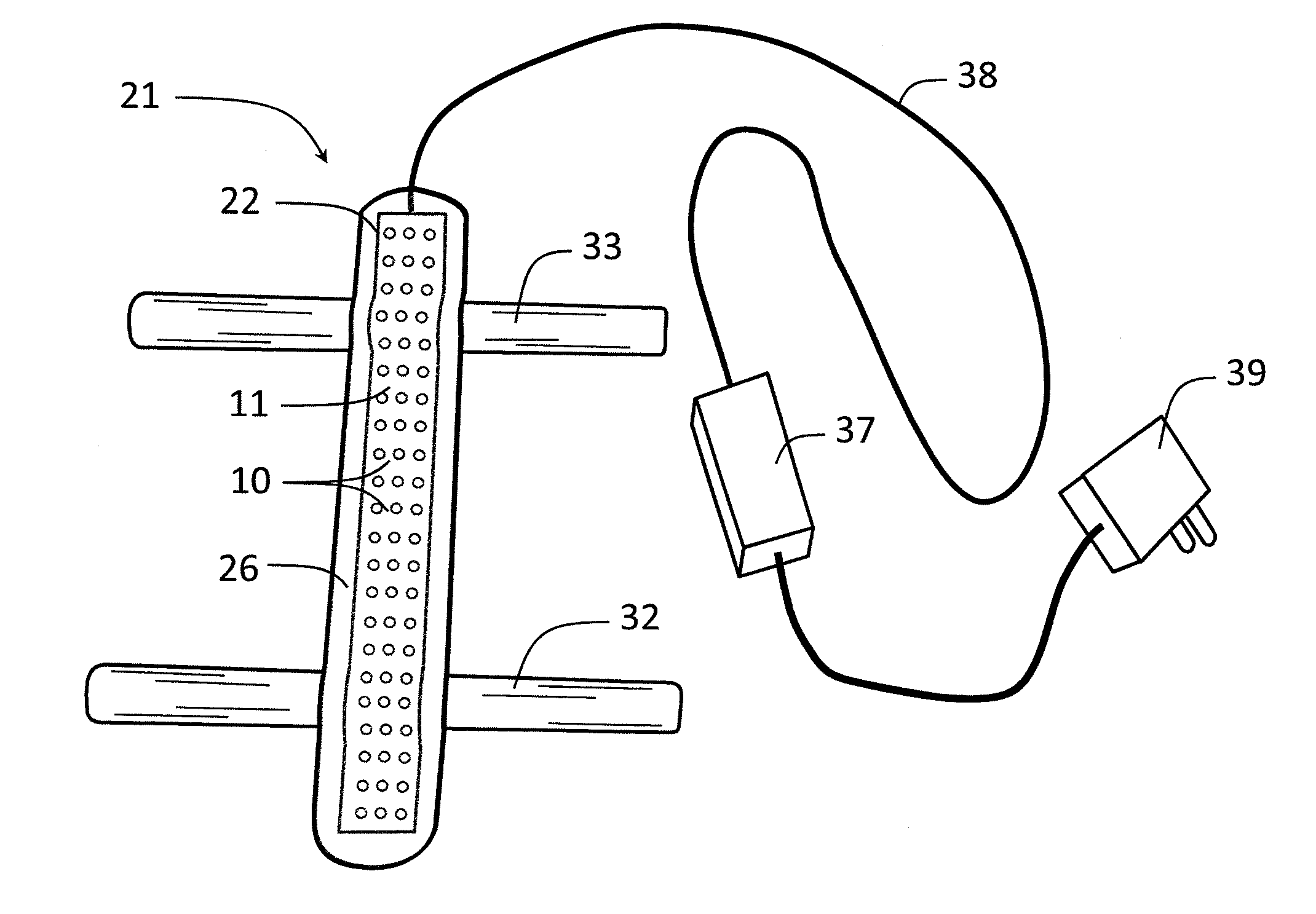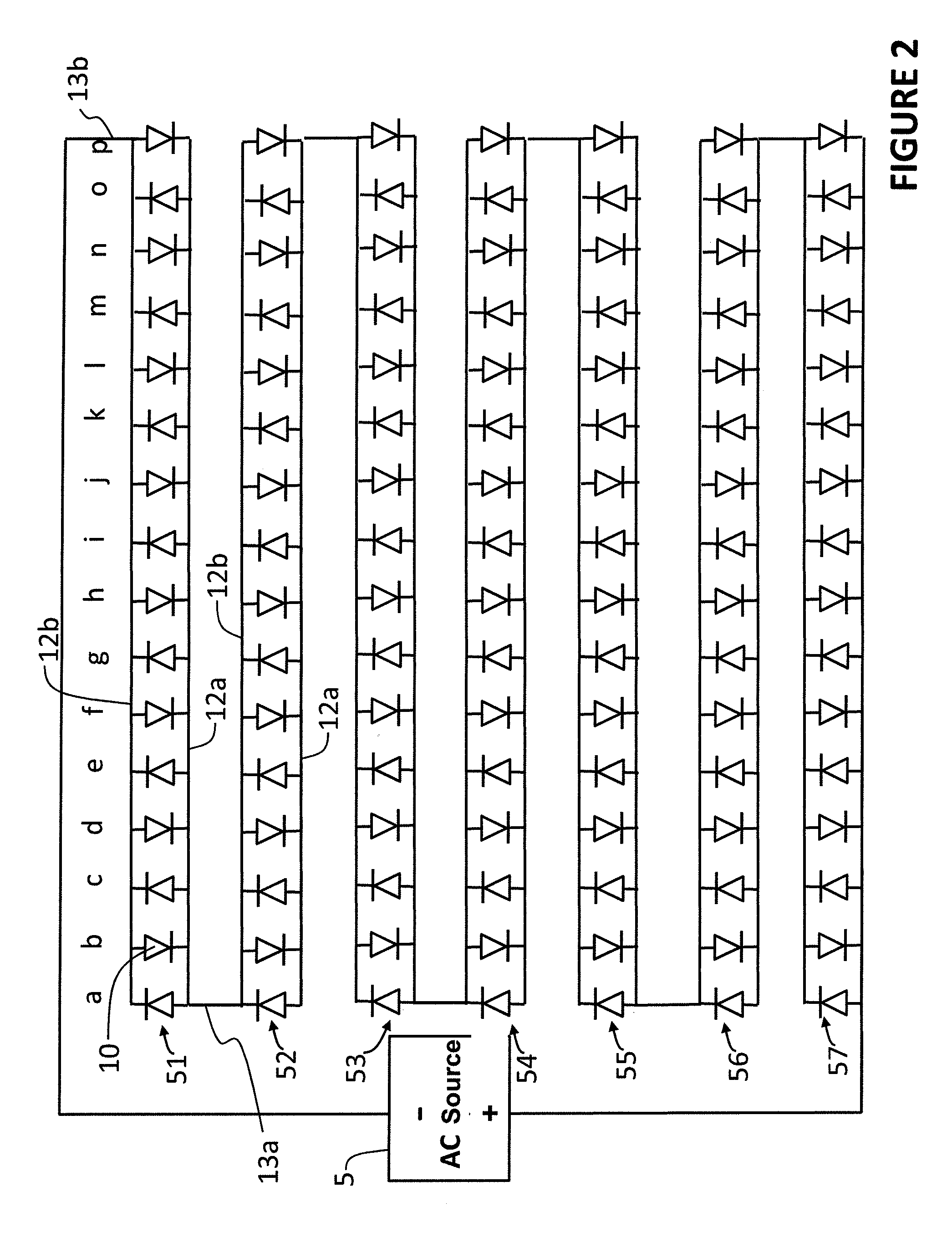Light and bioelectric therapy pad
a bioelectric and electrode technology, applied in the field of light and bioelectric electrodes, can solve the problems of lack of electronic stimulation, lack of chromophores, and low current current level, and achieve the effects of flexibility, heat management, and final thinness of the therapy electrod
- Summary
- Abstract
- Description
- Claims
- Application Information
AI Technical Summary
Benefits of technology
Problems solved by technology
Method used
Image
Examples
Embodiment Construction
[0045]The present invention employs independently, and in combination, the principles of unidirectional current flow in the forward direction through a diode, and Ampere's law of magnetic fields from current through a wire.
[0046]Current flows through a diode in the forward direction, from the anode terminal of the diode toward the cathode terminal of the diode. Current supplied at the anode terminal will flow through the diode. Current supplied at the cathode terminal will not flow through the diode.
[0047]The present invention provides a circuit comprising a plurality of diodes that are arranged and wired into an “approximate linear tracing” that provides a bioelectric therapy tracing. The plurality of diodes, typically light emitting diodes (LEDs), which also provide a source of light when current flows in the forward direction through the LED, are arranged in a row, and each LED in the row is wired in parallel with the other LEDs between a first header tracing and a second header ...
PUM
 Login to View More
Login to View More Abstract
Description
Claims
Application Information
 Login to View More
Login to View More - R&D
- Intellectual Property
- Life Sciences
- Materials
- Tech Scout
- Unparalleled Data Quality
- Higher Quality Content
- 60% Fewer Hallucinations
Browse by: Latest US Patents, China's latest patents, Technical Efficacy Thesaurus, Application Domain, Technology Topic, Popular Technical Reports.
© 2025 PatSnap. All rights reserved.Legal|Privacy policy|Modern Slavery Act Transparency Statement|Sitemap|About US| Contact US: help@patsnap.com



